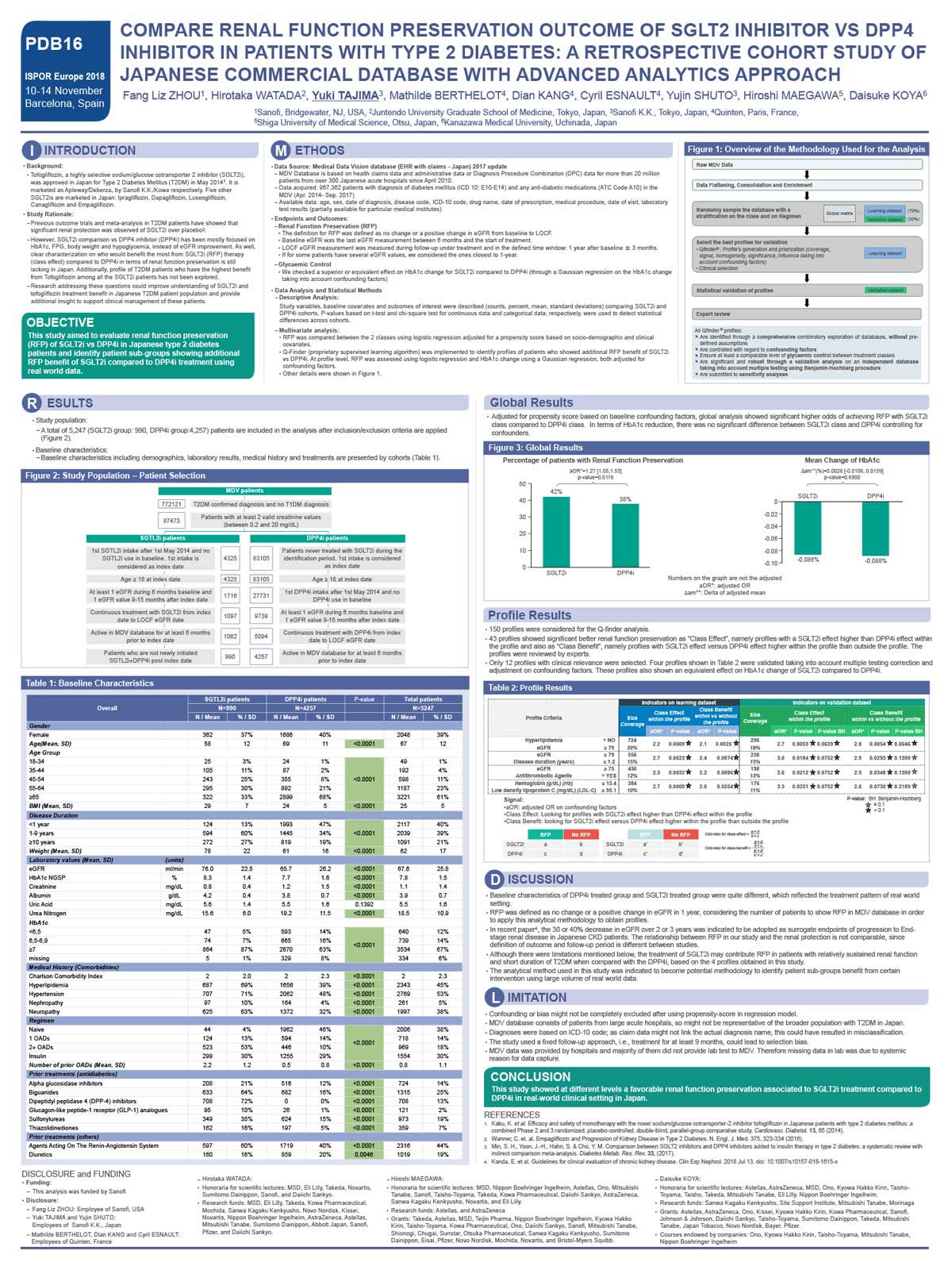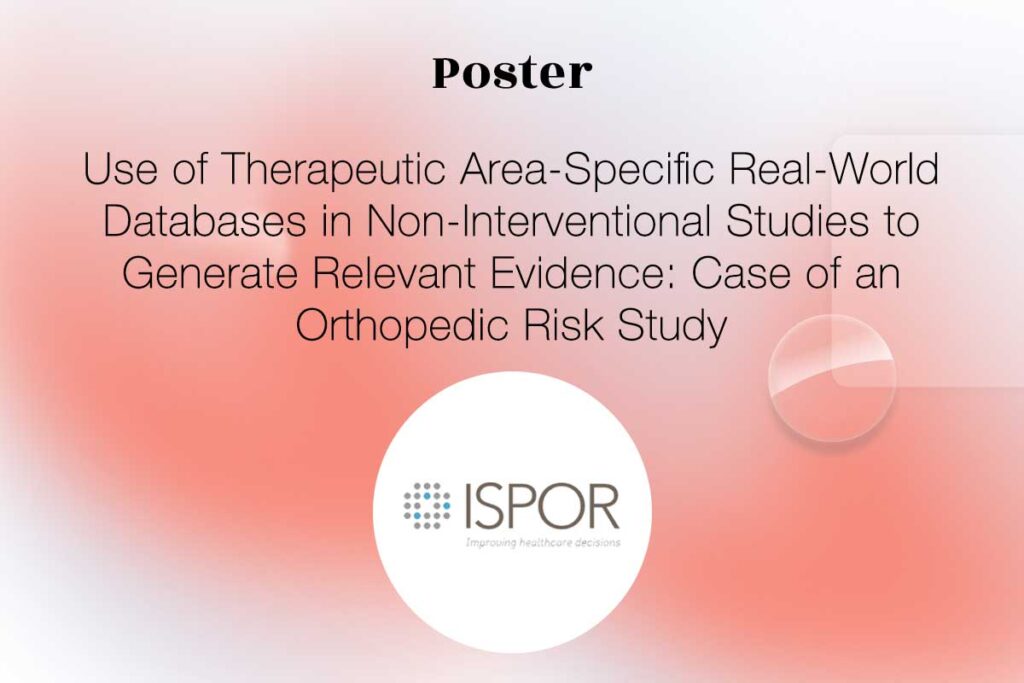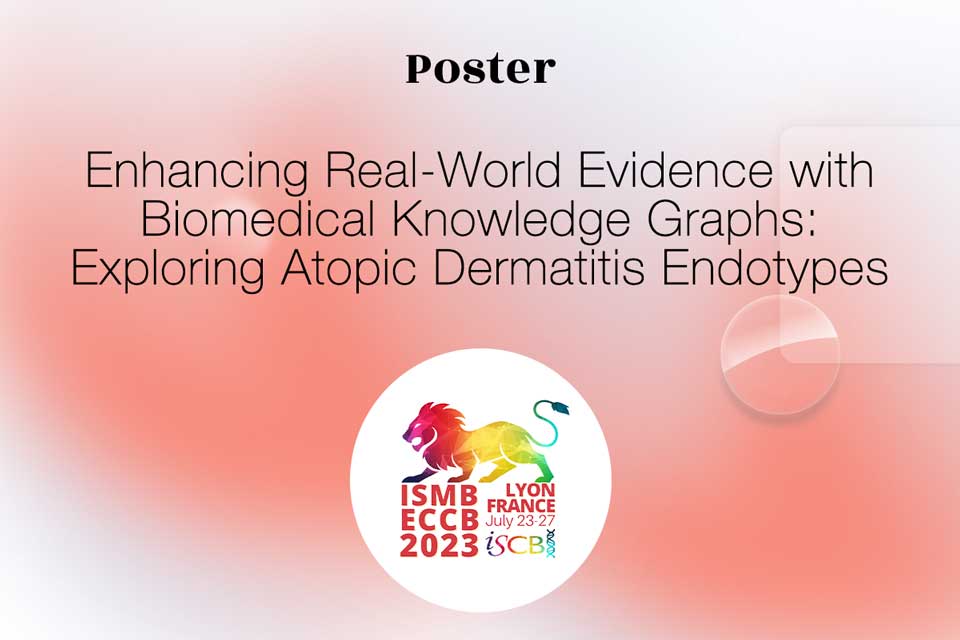Authors: F.L. ZHOU, H. WATADA, Y. TAJIMA, M. Berthelot, D. Kang, C. Esnault, Y. SHUTO, H. MAEGAWA, D. KOYA
Date: 10 November 2018
CONFERENCE/VALUE IN HEALTH INFO:
N°PDB16, 2018-11, ISPOR Europe, Barcelona, Spain
Abstract
Background
Tofogliflozin, a highly selective sodium/glucose cotransporter 2 inhibitor (SGLT2i), was approved in Japan for Type 2 Diabetes Mellitus (T2DM) in May 2014. It is marketed as Apleway/Deberza, by Sanofi K.K./Kowa respectively. Five other SGLT2is are marketed in Japan: Ipragliflozin, Dapagliflozin, Luseogliflozin, Canagliflozin and Empagliflozin.
Objectives
This study aimed to evaluate renal function preservation (RFP) of SGLT2i vs DPP4i in Japanese type 2 diabetes patients and identify patient sub-groups showing additional RFP benefit of SGLT2i compared to DPP4i treatment using real world data.
Methods
- Data Source: Medical Data Vision database (EHR with claims – Japan) 2017 update
- MDV Database is based on health claims data and administrative data or Diagnosis Procedure Combination (DPC) data for more than 20 million patients from over 300 Japanese acute hospitals since April 2010.
- Data acquired: 967,362 patients with diagnosis of diabetes mellitus (ICD 10: E10-E14) and any anti-diabetic medications (ATC Code A10) in the MDV (Apr. 2014- Sep. 2017)
- Available data: age, sex, date of diagnosis, disease code, ICD-10 code, drug name, date of prescription, medical procedure, date of visit, laboratory test results (partially available for particular medical institutes)
- Endpoints and Outcomes:
- Renal Function Preservation (RFP)
- The definition for RFP was defined as no change or a positive change in eGFR from baseline to LOCF.
- Baseline eGFR was the last eGFR measurement between 6 months and the start of treatment.
- LOCF eGFR measurement was measured during follow-up under treatment and in the defined time window: 1 year after baseline ± 3 months.
- If for some patients have several eGFR values, we considered the ones closest to 1-year.
- Glycaemic Control
- We checked a superior or equivalent effect on HbA1c change for SGLT2i compared to DPP4i (through a Gaussian regression on the HbA1c change taking into account confounding factors)
- Data Analysis and Statistical Methods
- Descriptive Analysis:
- Study variables, baseline covariates and outcomes of interest were described (counts, percent, mean, standard deviations) comparing SGLT2i and DPP4i cohorts. P-values based on t-test and chi-square test for continuous data and categorical data, respectively, were used to detect statistical differences across cohorts.
- Multivariate analysis:
- RFP was compared between the 2 classes using logistic regression adjusted for a propensity score based on socio-demographic and clinical covariates.
- Q-Finder (proprietary supervised learning algorithm) was implemented to identify profiles of patients who showed additional RFP benefit of SGLT2i vs DPP4i. At profile level, RFP was assessed using logistic regression and HbA1c change using a Gaussian regression, both adjusted for confounding factors.
- Renal Function Preservation (RFP)
Results
- Study population:
- A total of 5,247 (SGLT2i group: 990, DPP4i group:4,257) patients are included in the analysis after inclusion/exclusion criteria are applied
- Baseline characteristics:
- Baseline characteristics including demographics, laboratory results, medical history and treatments are presented by cohorts Conclusions









